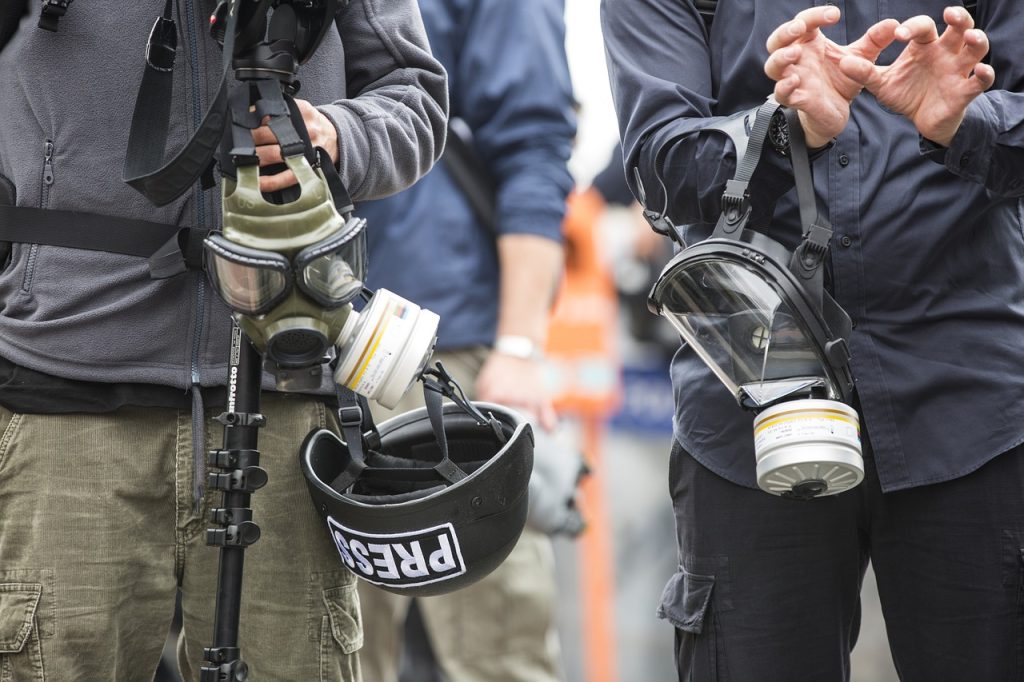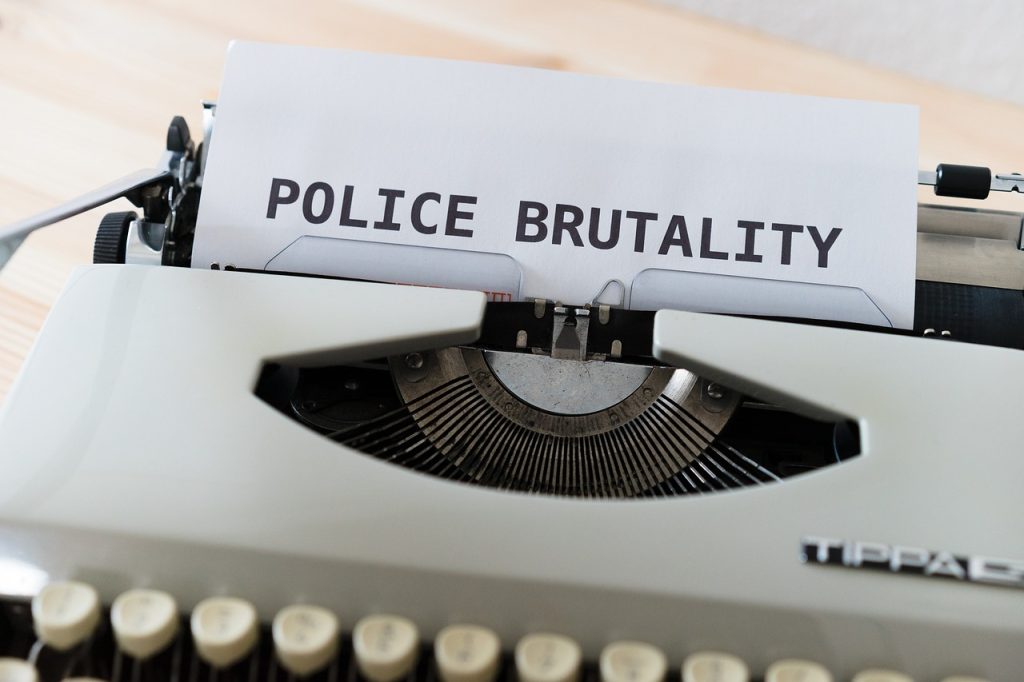In this article, we explore the impact of police pepper spray on individuals. Whether you have encountered pepper spray firsthand or have simply heard about its use, understanding its effects is crucial. By examining the physical and psychological repercussions, as well as potential misconceptions surrounding its use, we aim to provide you with a comprehensive perspective on the topic. So sit back, relax, and prepare to gain insight into the effects of police pepper spray on individuals.
Table of Contents
ToggleImmediate Effects of Police Pepper Spray
Burning sensation
When you are exposed to police pepper spray, one of the most immediate and noticeable effects is a burning sensation on your skin. The active ingredient in pepper spray, capsaicin, interacts with your nerve endings, causing an intense and painful burning feeling. This sensation can be quite uncomfortable and can persist for several minutes or even hours after exposure.
Blurred vision and eye irritation
Another immediate effect of police pepper spray is blurred vision and eye irritation. When the spray is deployed, it can quickly reach your eyes and cause intense pain and discomfort. Your eyes may become red, swollen, and teary, and your vision may become blurred or even temporarily impaired. It is crucial to avoid rubbing your eyes, as this can further exacerbate the irritation.
Difficulty breathing
Inhaling police pepper spray can result in difficulty breathing. The spray irritates the respiratory system, causing your airway to constrict and making it harder to breathe. This can be especially concerning for individuals with pre-existing respiratory issues such as asthma or chronic obstructive pulmonary disease (COPD). In severe cases, it may even lead to shortness of breath or temporary respiratory distress.
Coughing and choking
As a result of the respiratory irritation caused by pepper spray, coughing and choking can occur. The intense burning and irritation in your airways can trigger a reflexive response, leading to persistent coughing and difficulty regaining control of your breath. This can be distressing and alarming, further adding to the overall discomfort of the experience.
Dizziness and disorientation
Exposure to police pepper spray can also cause dizziness and disorientation. The combination of intense pain, blurred vision, and respiratory distress can make it challenging to maintain your balance and mental clarity. You may feel lightheaded or unsteady on your feet, making it difficult to navigate your surroundings effectively.
Nausea and vomiting
It is not uncommon for individuals exposed to police pepper spray to experience nausea and even vomiting. The strong chemical irritants in the spray can disturb your stomach, leading to feelings of queasiness and possibly causing you to throw up. These effects can contribute to an overall sense of physical discomfort and distress.
Long-term Effects of Police Pepper Spray
Corneal abrasions and injuries
One of the potential long-term effects of police pepper spray is corneal abrasions and injuries. The intense burning and eye irritation can cause damage to the delicate surface of your cornea, the transparent layer covering the front of your eye. Corneal abrasions can lead to blurred vision, eye redness, and even more serious complications if left untreated.
Respiratory issues
Repeated exposure to police pepper spray can result in respiratory issues. Chronic respiratory conditions, such as bronchitis or asthma, may be exacerbated by the irritants in the spray, leading to increased symptoms and potential long-term damage to the lungs. It is crucial for individuals with pre-existing respiratory conditions to take extra precautions when exposed to pepper spray.
Psychological trauma
Experiencing the immediate and intense effects of police pepper spray can have psychological implications. The traumatic nature of the event, combined with the physical discomfort and distress, can lead to long-term psychological trauma. Individuals may develop anxiety or post-traumatic stress disorder (PTSD) as a result of their encounter with pepper spray.
Allergic reactions
In some cases, individuals may experience allergic reactions to police pepper spray. These reactions can range from mild skin irritation and rashes to swelling of the face and difficulty breathing. It is crucial to be aware of any allergies you may have and inform law enforcement personnel about them before any potential exposure to pepper spray.
Skin problems
Pepper spray can also have adverse effects on the skin, especially if it comes into direct contact with your skin or remains on your clothing for an extended period. The chemical irritants in the spray can cause skin redness, irritation, and even chemical burns. These skin problems may require medical attention and can leave lasting scars.
Potential for exacerbating pre-existing medical conditions
Individuals with pre-existing medical conditions should be especially cautious when exposed to police pepper spray. The irritants can worsen symptoms and potentially trigger serious health complications. It is crucial to communicate any pre-existing conditions to law enforcement personnel to ensure that appropriate measures are taken to minimize the risk of exacerbation.

This image is property of pixabay.com.
Legal and Ethical Considerations
Use of force policies
The use of police pepper spray is regulated by specific use of force policies. These policies outline the circumstances under which pepper spray may be used and prescribe guidelines for its deployment. It is essential for law enforcement agencies to have clear and transparent use of force policies that strike a balance between protecting officer safety and avoiding unnecessary harm to individuals.
Excessive use of pepper spray
One of the key ethical considerations when it comes to police pepper spray is the potential for excessive use. It is crucial for law enforcement personnel to use pepper spray responsibly and proportionally to the situation at hand. Overuse or misuse of pepper spray can result in unnecessary harm and raise concerns about the abuse of power.
Racial bias and discriminatory use
There have been concerns about racial bias and discriminatory use of pepper spray by law enforcement personnel. Studies have shown that individuals from marginalized communities, including Black, Indigenous, and People of Color (BIPOC), are disproportionately subjected to the use of pepper spray. Addressing and eliminating any racial bias in the deployment of pepper spray is crucial to ensuring fair and equitable treatment.
Accountability and training
To prevent misuse and abuse of pepper spray, accountability and proper training are essential. Law enforcement agencies should hold officers accountable for their actions, especially when it comes to the use of force. Adequate training on the appropriate deployment of pepper spray, along with clear guidelines on when and how it should be used, can help minimize the risk of unnecessary harm.
International standards and guidelines
International standards and guidelines can provide valuable insights into the use of pepper spray and its potential effects. Looking to countries that have comprehensive regulations and protocols in place can help inform and shape the policies and practices of law enforcement agencies. Adopting best practices from around the world can promote responsible and ethical deployment of pepper spray.
Immediate First Aid and Treatment
Flushing with water
If you have been exposed to police pepper spray, the immediate first aid step is to flush the affected areas with water. This helps to remove the irritants from your skin, eyes, and respiratory system. Be sure to use cool water, as hot water can worsen the burning sensation. Continue to flush with water for at least 15 minutes or until the pain and discomfort subside.
Avoid rubbing eyes
While it may be tempting to rub your eyes to alleviate the discomfort, it is crucial to resist the urge. Rubbing your eyes can exacerbate the irritation and potentially cause further damage. Instead, keep your eyes closed and try to blink gently to encourage tears and natural cleansing.
Removing contaminated clothing
If your clothing or any other items have been contaminated with pepper spray, remove them as soon as possible. Pepper spray can adhere to fabrics, prolonging the exposure and increasing the risk of further irritation. Remove the affected clothing carefully to avoid dispersing the irritants onto other parts of your body.
Not using irritants like milk or oil-based substances
Contrary to popular belief, using irritants like milk or oil-based substances is not recommended for treating pepper spray exposure. These substances can potentially worsen the effects of the spray by trapping the irritants against your skin and eyes. Stick to using water for the initial flushing and seek medical attention if necessary.

This image is property of pixabay.com.
Preventive Measures for Law Enforcement
Training and education
Proper training and education are paramount for law enforcement personnel when it comes to the use of pepper spray. They should receive comprehensive training on the appropriate circumstances for deployment, as well as the potential effects and risks associated with its use. Ongoing education and refresher courses can also ensure that officers stay up to date with the latest best practices.
Alternative methods of restraint
In order to minimize the reliance on pepper spray, law enforcement agencies should explore and utilize alternative methods of restraint. This can include de-escalation techniques, communication strategies, and the use of less-lethal weapons that do not pose the same level of potential harm. Seeking out and implementing alternatives can help reduce the need for pepper spray in certain situations.
Proper deployment techniques
Law enforcement personnel should be trained in proper deployment techniques to minimize the risk of unnecessary harm. This includes understanding the appropriate distance and angle for effective deployment, as well as being aware of potential environmental factors that could affect the spray’s effectiveness. By adhering to proper deployment techniques, the risk of accidental exposure or excessive use can be mitigated.
Regular equipment maintenance
Pepper spray canisters and other related equipment should undergo regular maintenance to ensure their proper functioning. Routine inspections, testing, and replacement of expired or faulty canisters can help reduce the risk of malfunctions or ineffective deployment. By keeping equipment in optimal condition, law enforcement agencies can increase the likelihood of successful and safe use when necessary.
Implications on Vulnerable Populations
Children and the elderly
Children and the elderly may be particularly vulnerable to the effects of pepper spray due to their smaller body mass and potentially underlying health conditions. The intense burning sensation, respiratory distress, and psychological trauma can have more severe consequences for these populations. Law enforcement agencies should consider alternative strategies when dealing with children or elderly individuals to minimize the risk of harm.
Pregnant women
Pregnant women should exercise caution when exposed to pepper spray, as the effects on their health and the well-being of the unborn child are not yet fully understood. The respiratory distress and potential allergic reactions may have implications for fetal health. The use of pepper spray should be approached with extreme caution in situations involving pregnant women.
People with pre-existing health conditions
Individuals with pre-existing health conditions, such as respiratory issues, allergies, or skin sensitivities, are at higher risk of experiencing severe effects from pepper spray exposure. Law enforcement personnel should be trained to recognize and accommodate individuals with these conditions, taking appropriate measures to minimize harm. Communication with individuals about their health conditions can ensure proper care and minimize risks.
Impact on marginalized groups
There is a growing body of evidence that suggests marginalized groups, including BIPOC communities, are disproportionately affected by police pepper spray. This raises concerns about potential disparities, racial bias, and discriminatory use. Law enforcement agencies must actively address these issues, promote fairness and equality, and ensure that the use of pepper spray is never unjustly targeting specific communities.

This image is property of pixabay.com.
Research and Studies on Pepper Spray
Effectiveness and safety studies
Numerous studies have been conducted to assess the effectiveness and safety of pepper spray. Research has shown that pepper spray is an effective tool for controlling aggressive individuals and gaining compliance. However, it is crucial to continue conducting research to understand the potential risks and explore ways to minimize harm while ensuring officer safety.
Comparison with other non-lethal weapons
Researchers have also compared pepper spray with other non-lethal weapons to evaluate their effectiveness and potential side effects. This research helps law enforcement agencies make informed decisions about selecting the appropriate tools and techniques for different situations. Comparisons with other options, such as stun guns or batons, can help strike a balance between officer safety and minimizing harm to individuals.
Analysis of Health implications
The health implications of pepper spray exposure have been a focus of many research studies. These studies examine the short-term and long-term effects on various body systems, including the eyes, respiratory system, and skin. Understanding the health implications is crucial for developing proper preventive measures, treatment protocols, and training programs for law enforcement personnel.
Policy recommendations
Research on pepper spray can also inform policy recommendations regarding its use. Experts use scientific findings to advocate for changes in use of force policies, deployment guidelines, and training standards. Evidence-based policy recommendations can help ensure the responsible and ethical use of pepper spray and minimize the potential for misuse or abuse.
Public Perception and Controversies
Misuse and abuse by law enforcement
Instances of the misuse and abuse of pepper spray by law enforcement personnel have sparked controversies and public outrage. Cases where pepper spray has been used on peaceful protestors or individuals who pose no threat have raised concerns about excessive use of force. These incidents have further fueled calls for increased accountability and stricter regulations.
Protests and public demonstrations
Pepper spray often becomes a prominent issue during protests and public demonstrations. The use of pepper spray on demonstrators, especially when it is perceived as excessive or unwarranted, can intensify tensions and erode trust between law enforcement and the public. These incidents have led to widespread discussions regarding the appropriate use of force during protests and the protection of civil liberties.
Civil rights and human rights concerns
The use of pepper spray has raised civil rights and human rights concerns, particularly regarding the disproportionate impact on marginalized groups. Critics argue that the excessive use of pepper spray can violate individuals’ right to be free from cruel and unusual punishment. Safeguarding civil and human rights is crucial when considering the use of any law enforcement tactic.
Calls for reform and accountability
The controversies surrounding pepper spray have prompted calls for reform and increased accountability in law enforcement practices. Advocates for police reform argue for stricter regulations, improved training, and increased transparency regarding the use of force, including pepper spray. These calls aim to ensure that law enforcement personnel are held accountable for their actions and that individuals’ rights and well-being are protected.
Alternatives to Police Pepper Spray
De-escalation techniques
De-escalation techniques are a crucial alternative to the use of pepper spray. By employing effective communication strategies, active listening, and empathy, law enforcement personnel can reduce the need for physical force. De-escalation techniques prioritize dialogue and understanding, fostering a more peaceful resolution to potentially volatile situations.
Less-lethal weapons options
Law enforcement agencies have access to a range of less-lethal weapons options that can be used as alternatives to pepper spray. These include devices such as bean bag rounds, rubber bullets, or stun guns. It is essential for law enforcement to consider the specific circumstances and choose the appropriate option that poses the least risk of harm.
Training in negotiation and crisis intervention
Providing law enforcement personnel with comprehensive training in negotiation and crisis intervention can equip them with valuable skills to defuse tense situations. Communication and conflict resolution training build the capacity for officers to effectively manage confrontations without resorting to the use of force. By prioritizing de-escalation and negotiation techniques, law enforcement officers can help prevent the need for pepper spray.
Community policing and trust-building
Community policing and trust-building efforts can significantly reduce the reliance on pepper spray. By fostering positive relationships between law enforcement and the community, officers can gain trust and cooperation. Investing in community engagement initiatives, increasing diversity within law enforcement agencies, and enhancing transparency can contribute to a safer and more harmonious environment where the use of pepper spray is minimized.
Conclusion
The effects of police pepper spray on individuals can be immediate, intense, and long-lasting. The burning sensation, blurred vision, difficulty breathing, and other immediate effects can cause significant distress and discomfort. Corneal abrasions, respiratory issues, and psychological trauma are among the potential long-term effects. It is crucial for law enforcement agencies to consider the legal and ethical considerations when using pepper spray, including the potential for excessive use, racial bias, and accountability. Immediate first aid and treatment involve flushing with water and avoiding rubbing the eyes. Preventive measures for law enforcement include training and education, exploring alternative methods of restraint, proper deployment techniques, and regular equipment maintenance. Vulnerable populations, such as children, the elderly, pregnant women, and those with pre-existing health conditions, require extra caution. Research and studies on pepper spray’s effectiveness and safety, health implications, and policy recommendations can inform responsible use. Public perception and controversies surrounding pepper spray highlight the need for reform, increased accountability, and alternatives like de-escalation techniques and community policing. Striking a balance between officer safety and citizen well-being is essential, backed by ongoing research and a commitment to transparency and accountability in law enforcement.














